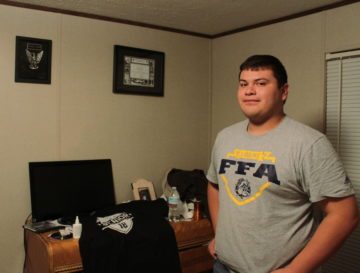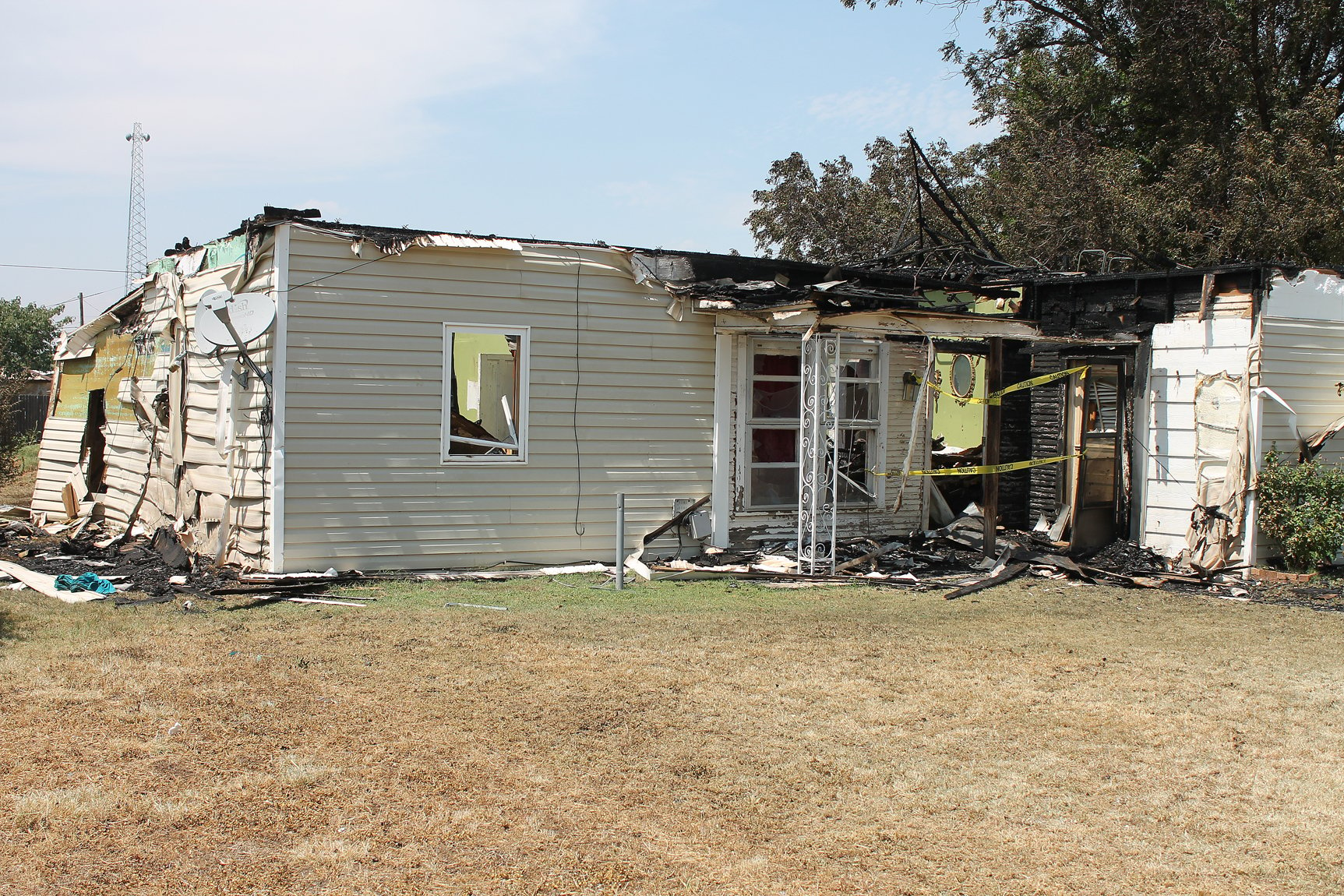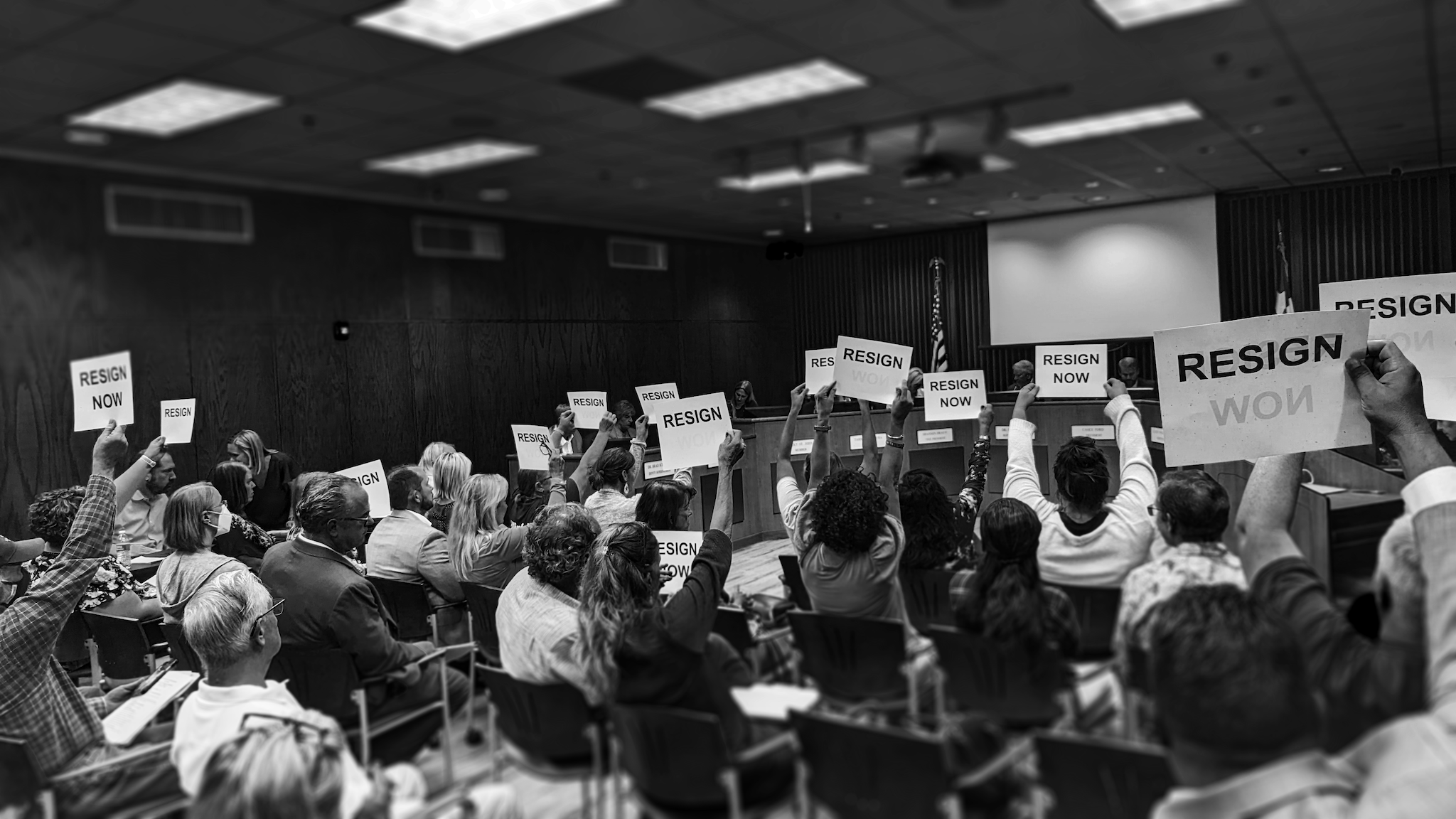Rural Poverty, Youth Homelessness Abound in Loraine, Pop. 587
Loraine ISD helps homeless students cope, but few other public resources are available for youth in Texas’ remote Big Country.
By Christopher Collins
December 12, 2017
On a blustery, 40-degree night in December, a Christmas tree lights up 19-year-old Armando Gonzalez’s home in Loraine, a community of 587 people about an hour west of Abilene. His mother, Sylvia, is cooking ground beef and cutting onions in the kitchen, the scent filling up the three-bedroom prefab house that sits a block from the town’s main drag. It’s comfortable here. It feels like home.
This is a marked change from how the family lived earlier this year. After their house burned down on Independence Day in 2016, Armando, his father Cesar and Sylvia lived in a motel for a week until they could gather enough money to pay the deposit and first month’s rent at a local apartment complex. Even then, Sylvia’s income as a nursing home assistant and Cesar’s disability checks were barely enough to make the monthly rent payments of $670, plus other expenses. Sometimes they didn’t have money to keep the lights on.

“After the fire, for the first couple of days, I didn’t say anything to anyone, not even my own parents,” Armando said. “I was thinking, ‘Wow, this just happened to me. Where are we going to go now? What do we have in store for us?’ I just realized at that moment that I was homeless.”
That year, Armando was one of 11 students classified as homeless at Loraine ISD, a tiny district in the Big Country region of west central Texas. In the 2015-16 school year, the most recent year for which data is available, Loraine’s 11 homeless students made up 5.6 percent of the district’s total enrollment of 195. The state average that year was 2.1 percent.
The year before, the district counted 28 homeless students, putting its homeless rate in the top 2 percent of districts statewide.
Because all of the Gonzalez family’s belongings were lost in the fire, the school district used federal funds set aside specifically for homeless services to buy Armando clothes, toiletries and other necessities. No state funding exists specifically for this type of assistance. “They said, ‘Just get whatever you need,’” Armando said.
Family friends also donated furniture and appliances. But even with help, Armando, a bulky, brown-eyed Eagle Scout and FFA member, quit the school’s six-man football team, one of his favorite activities, “because of all the pressure I had to go through.”

A report jointly released by Texas Appleseed and the Texas Network of Youth Services in November showed that student homelessness is not only an urban problem, but a suburban and rural one, too. While urban districts count the highest number of homeless students, some of the highest rates of homelessness are found in poor, rural areas that often lack shelters and other services for homeless youth.
The U.S. Department of Education defines a homeless student as one who does not have a “fixed, regular, and adequate nighttime residence.” That definition includes a student living in a motel, in a home without electricity or doubled up with another family during the school year.
Homelessness has been linked to lower academic achievement and a higher likelihood of dropping out. Armando appears to have bucked that trend. Despite being diagnosed as dyslexic, he’s on the A-B Honor Roll at Loraine School, which serves grades K-12, and he’s been accepted to Howard College in Big Spring.
“After the fire, for the first couple of days, I didn’t say anything to anyone, not even my own parents.”
At Loraine ISD, administrators say providing services to homeless and at-risk students is one of their most important jobs. “You can drive through Loraine and just kind of tell that a lot of our kids are economically disadvantaged,” said Brandon McDowell, the district’s superintendent, when I met him at the school in late November. Principal James Womack worked in the Arlington and Fort Worth school districts before coming to Loraine. “This is like taking inner city needs and putting them out here in Loraine: the high mobility, the low socioeconomic status, the community concerns with mental health, the housing issues,” Womack said.
While services such as youth shelters, health clinics and food pantries are available in bigger towns and cities, they are sparse to nonexistent in Loraine. There is no youth shelter. There is no hospital. The closest food bank is 10 miles away in Colorado City, which can be difficult to reach without reliable transportation. Underscoring the lack of services is rural poverty — 27 percent of Loraine residents live below the federal poverty line, compared to the state average of 16 percent. U.S. Census Bureau data indicates that nearly half of children in Loraine are impoverished.
To hear pastors, school administrators and other residents tell it, the town once was a lively, if still modest, place to live in the 1980s and ’90s. Greasy spoon restaurants abounded, along with a handful of gas stations, small cotton farms, a hardware store, a barber shop, a pharmacy and a hospital.
Now the place feels like a ghost town that hasn’t quite given up the ghost.
Just a couple blocks off Main Street, pothole-scarred paved roads eventually give way to gravel. Overgrown lots outnumber the well-kept. The rubble from a demolished home lays exactly where it fell — no one’s bothered to pick up the pieces. The city barely has money to pay for basic public services because of the previous administration’s financial mismanagement, said Mayor Irene Graham. “We’re running out of money quick,” she said.
In stark contrast, Loraine School, only five years old and funded with a $12 million bond, rises from the southern edge of the town like a shining castle. Other than a handful of charities and churches, the school is the only entity that provides services for homeless youth here. “There’s a lot of kids in Loraine who are struggling to eat. And if it weren’t for the school, they wouldn’t eat,” said Duane Linam, who sits on the school board. Linam recalled one day this year when two kids, 8 and 5, wandered over to the Methodist church where he serves as a layperson and knocked on the door. They said they were hungry. Linam took them out for burgers.

This combination of rural poverty, student homelessness and lack of social services is pervasive throughout the Big Country, said Tina Haywood, a homelessness consultant at Region 14 Education Service Center, which includes Loraine ISD. The region also includes Moran ISD in Shackelford County, where 25 percent of students were homeless during the 2015 to 2016 school year, and Hamlin ISD in Jones County, where 19 percent were homeless.
“When you think about this area, we’re scattered. There’s a lot of land in between [towns],” Haywood said. “The higher amount of poverty in these smaller towns, along with them being so spread out, means there’s not a whole lot of resources nearby. The resources are more accessible in metro areas.”
Haywood said a plan is in the works to designate a homeless youth shelter in Abilene; it would be the only shelter of its kind in the region. Region 14 is also working to connect small school districts in the area so that they can share resources for students in need. “It’d be great if the small districts could work together to provide things,” she said. “We want to eliminate any barriers these students may face in their education.”



